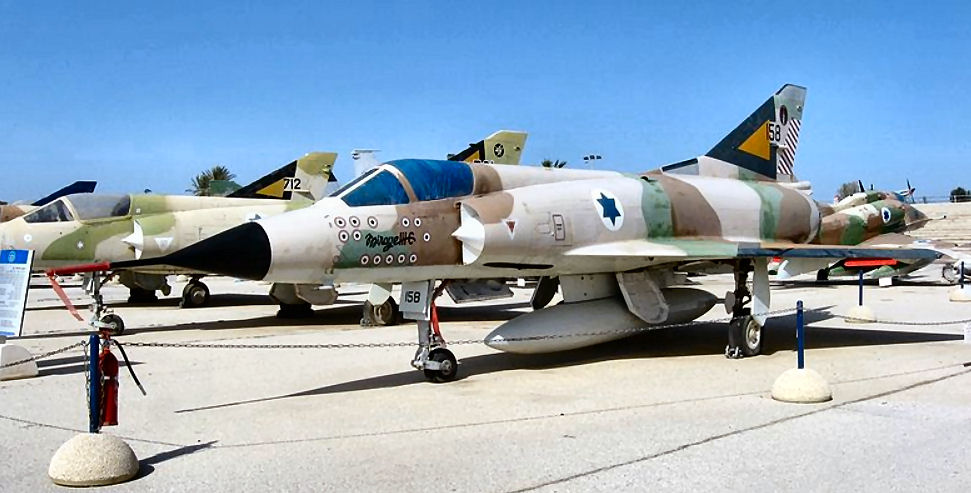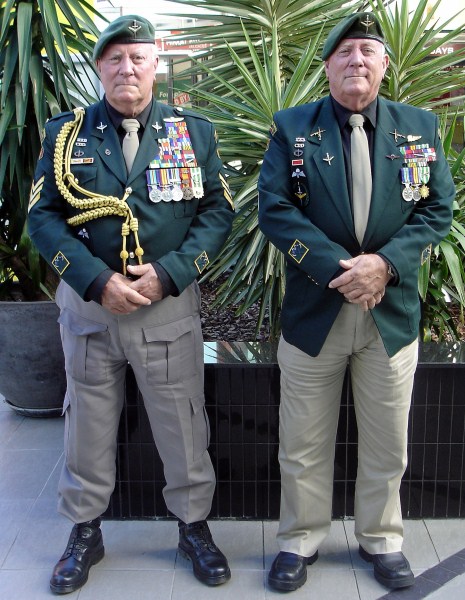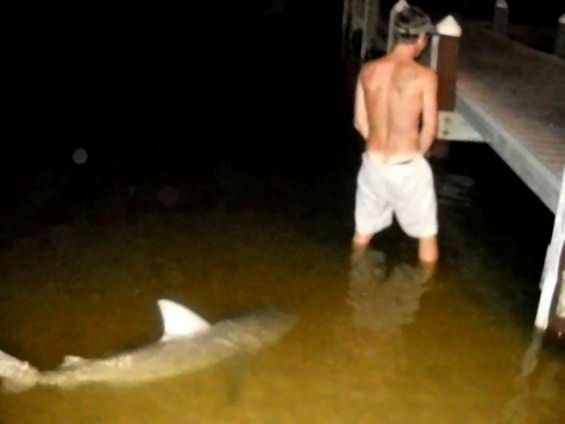|
Radschool Association Magazine - Vol 41 Page 10 |
|
Privacy Policy | Editorial Policy | Profit Policy | Join the Association | List of Members | Contact us | Index | Links |
|
Back Go to page: 1 2 3 4 5 6 7 8 9 10 11 12 13 14 15 16 17 18 19 20 Forward |
|
|
|
The Bloodhound. Thanks to Roger Bailey for the following.
Have you ever wondered why the RAAF had the
Bloodhound Mk1 surface to air missiles for
The simple answer is that they didn’t work and the British knew they had a fundamental and irreparable design flaw when they sold them to Australia. As a means of placating the RAAF, and limiting the adverse publicity that would be directed at both the British and the Australians involved in this purchase, the British supplied the gliders and associated equipment that enabled the RAAF to establish a gliding club at most RAAF bases which had an airstrip.
Australia got dudded on high speed guided missiles but at least we got gliders!
A quick look at the timeline of the development of the Bloodhound Mk1 missiles purchased by Australia and the development of solid state electronics illustrates the problem. The Bloodhound missiles and the associated radars and homing electronics were developed in the 1950s and they used vacuum tubes (valves) and not solid state devices.
This use of ruggedized (W) valves was satisfactory for ground based equipment and most airborne equipment however, they were not suitable for aircraft that exceeded the G forces that could move or deform the multiple elements within the valves’ glass envelopes. As can be seen in numerous photographs of the Bloodhounds the RAAF installed in Williamtown and Darwin, but which are now in various museums or static displays around the country, to enable the missiles to accelerate from the launch pad to the target, they used four solid fuelled booster rockets which were jettisoned after a few seconds when the speed of the missile was high enough to enable the two ram jets to operate efficiently. Some photographs only show the two ram jets but more detailed photographs clearly also show the four solid fuelled booster rockets located near the four forward winglets.
Photograph of the main gate at RAAF Darwin, taken after late 1968, shows the four booster rockets attached to the main body of the Bloodhound. Several videos of the actual test firings exist on the internet, for a launch at Woomera in 1958 see HERE, and they show the four booster rockets being jettisoned early in the flight. This entire video of the Woomera launch is 1 minute 3 seconds long and the booster rockets are jettisoned at 17 seconds and by then the missile is powered by the two ram jet engines. This gives a good idea of the G forces applied at launch. In Vol38, Page20 there were two photos of a Bloodhound being installed at East Sale. The top photograph shows it fitted with the two ram jets while the lower photograph shows the two ram jets and the four smaller diameter booster rockets. Another Bloodhound is at the RAAF museum at Point Cook (top photo) and it also shows the booster rockets.
Internet site www.wingweb.co.uk/missiles/bristol_bloodhound_sam.html states ‘However, the Ferranti designed type 83 pulsed radar was susceptible to jamming, and could be confused by ground clutter limiting its low-level capability.’ In the next paragraph ‘In 1960, - - - work continued on a revised Bloodhound, the Bloodhound Mk2 to tackle some of the deficiencies in the original design. The Bloodhound Mk2 replaced the Mk1 in RAF service, and was deployed both at home (the UK) and to Malaysia in 1964.’
As noted on that web site ‘In 1960 work continued on the revised Bloodhound to tackle some of the deficiencies’ but the problem was that, by then, Australia had ordered the equipment but the British already knew they were useless and Australia installed the Mk1 versions in 1960 and they were ‘operational’ in 1961.
The Mk1 equipment purchased by Australia worked as designed in the simulator or while the missiles were sitting in their launch platforms but the instant they were launched, and were accelerated by the four booster rockets, the internals of the valves all deformed and some were crunched at the bottom of the glass envelope and the ‘guided’ missile then became a very expensive bullet. If you look at the video of the launch at Woomera in 1958 where the Bloodhound intercepts a Meteor jet, you will notice that both the missile and the target only went in a straight line and at no time did the Bloodhound have to change direction, even slightly, to intercept the target. This was probably the demo that clinched the sale to the RAAF.
Australia never bought the Mk2 versions – no surprise there, after being proud owners of Mk1s. Plus the gliders.
Considering that Australia only had one self-contained Bloodhound squadron at Williamtown, from 1961 until Bloodhounds were installed at Darwin in 1965, there was no surface-to-air defence outside the range of the sub-standard radar and control equipment located at Williamtown. And until the Mirages were up to operational readiness, Sydney for example relied on Canberra bombers flying from Amberley as any form of major deterrent.
It is interesting to read the ‘official line’ (still adopted by the RAAF) in Vol 38, Page 20 of the RAM. ‘High level air defence for Australian military bases and industrial centres.’ For the period 1961 to 1965 Australia only had the Bloodhounds installed at Williamtown and from 1965 to 1968 Australia doubled its high level defence capabilities by adding a missile installation at Darwin. High level defence capabilities? What about the Mirages which were operational before the Bloodhounds were installed at Darwin? The photograph in Vol38, Page 10 shows the RAF Bloodhound installation with 32 missiles at Butterworth, but the missiles – fitted with explosives and volatile rocket fuel - and their control radars are all located within the range of one good sized shrapnel bomb which would render them inoperative. In fact the four control radars are positioned in a straight line and as demonstrated by the Israeli’s during their bombing runs on the Egyptian airfields in the first 3 day war, the Mirage dropped bombs directly down the centre of the runways and this saved them from using more ordinances destroying the actual aircraft. If the enemy wanted to destroy Australia’s Bloodhound Mk1 missiles all they needed to do was come in just above ground level (the radar was known to be ‘limited in its low level capability’), and destroy the radars.
The concept of multiple surface-to-air (fixed location) installations may have been valid in a small area such as England (all of western Europe can fit in Queensland) but this does not explain why the second ‘stand-alone’ Bloodhound installation, complete with its own power generators and ancillary equipment was installed in Darwin in 1965 when they were all removed in 1968 and the RAAF had been using the ‘face saving’ gliders from the early 1960s. At least the local population in Darwin could sleep at night believing they had the best anti bomber deterrent in the world to protect them.
It must have been frustrating for the highly skilled and highly practised people manning this equipment to know that the missiles were absolutely useless and not one was ever launched, even when the two locations were disbanded in 1968, just ‘to see one go’. In fact, most of the equipment in Williamtown, including the hydraulic rams, electric motors, cables etc was all buried and no attempt was made to salvage or re-use the almost new equipment. It had only been used for 7 or 8 years. Out of sight, out of mind I suppose. The equipment in Darwin was only used for 3 years. The actual missiles can be seen at various museums and RAAF bases around Australia. I don’t know what happened to the Rolls Royce diesels and the 10Mwatt generators.
The combination of the Mirage fighter and the
Matra air-to-air missile was a much different concept and a more
efficient weapon than any surface-to-air missile, especially the
Bloodhound Mk1 which was known to be ‘less than functional’ because
not only was the Mirage capable of covering a much larger area than
Imagine a situation where the launch platform, in this case a Mirage travelling at 1800kmh, is flying head on to another aircraft doing the same speed. That’s a closing speed of 3600kmh – 1km per second. Now just imagine how long a pilot has to make up his mind ‘what weapon to use’ and choose between guns/cannons, heat seeking missiles or radar guided missiles (much more expensive than heat seeking missiles but heaps more expensive than bullets or cannon shells), or ‘get the hell out of here’. Too late. Any aircraft that tries to make a U turn, or any slight deviation, is vulnerable to any weapon fired from the other aircraft and at those speeds any slight surface damage causes the aircraft to be torn apart. In fact, because we do not want to hand a perfectly good missile to the enemy, (such as the latest and greatest sonobuoy that was picked up by the Russians during one of their sea trials in the North Sea in the 1960s) if the missile does not reach its target within a predetermined time, it self destructs so that the debris is useless to the enemy and the small fragments are spread over a wide area on the ground.
At least the Matra used solid state electronics, no doubt a lesson learned from trying to accelerate a missile with vacuum tubes, but from a service aspect the cable looms were a nightmare because the wires were all the same colour and were unmarked, irrespective (especially because) of their functions. If it was to conduct a low current, it may have only one unmarked, bland conductor but if its function required a larger current, it might use several cores of the same unmarked, bland conductor. It made the task of reverse engineering extremely difficult because all the person had was a handful of torn apart wires all the same colour and size and all unmarked, but it didn’t help the servicing either.
Within a few years of the Mirage and the associated weaponry being incorporated into the RAAF, identical equipment was being used by the Israelis in the two middle-east wars of the 1960’s and 1970’s and security within the RAAF was paramount. Gun-sight movies of the air-to-air battles in the beginning of both wars, (all the enemy’s planes were destroyed or the airfields made inoperative within the first 2 days) together with movies taken from the ground provide ample proof of the efficiency of this equipment and all I can say is thank god we had them and were not on the receiving end.
As the saying goes ‘If you can see them you can hit them and if you can hit them you can kill them.’
The internet site www.britishpathe.com/video/eye-on-asia shows a video with a Bloodhound on its launch pad in Darwin at the first part of the video and then it shows a Mirage being fitted and taking off with a Matra missile. The Mirage shown in the last few frames of the video is not fitted with a Matra but I suppose that was deemed to be not important to the feel-good newsreel. However, the image of the delta wings of the Mirage at the end of the video shows a flaw with this wing design because all the control surfaces are at the back of the aircraft and there is no method to control the nose. The only way to raise the nose above the rear of the plane was to lower the rear below the nose. Not recommended at lower altitudes. All later delta winged aircraft, which have their control surfaces at the rear of the aircraft, also have canard wings just aft of the canopy which apply lift to the front of the aircraft. Even the Israeli made and designed later version of the Mirage had canards.
|
|
No English dictionary has been able to adequately explain the difference between the two words, COMPLETE and FINISHED. In a recently held linguistic competition held in London, a Guyanese man was the clear winner when asked that question. He was asked: Some people say there is no difference between COMPLETE and FINISHED. "How do you explain the difference between COMPLETE and FINISHED in a way that is easy to understand?"
His answer was: "When you marry the right woman, you are COMPLETE. When you marry the wrong woman, you are FINISHED. And when the right one catches you with the wrong one, you are COMPLETELY FINISHED!"
|
|
Wannabees.
In our last issue (Vol40,
Page 8) we had a photo of two blokes who marched in the 2012
Brisbane Anzac Day parade. They were spotted by Paul Hines who took
the photo of them (right) and sent it to us.
At the time no-one knew who they were or what unit they supposedly represented, but everyone agreed, they sure looked good.
Not long after our Mag came out, the brown stuff really hit the fan (for these two anyway), they were instantly famous, on TV, in all the papers, on the radio, everywhere.
At last, Recognition!!! But for the wrong reason!!!
These two blokes, who are twins but with different names (??) have run fowl of the local constabulary and are now before the courts. They started life as John (Jack) Anthony Hines and George Edward Hines, but George decided he’d rather be called George Edward Carr, so he changed his name.
The Brisbane Times recently reported that the twin brothers, accused of impersonating war veterans, have asked for a three-week adjournment in their case so they can be psychiatrically assessed. John Anthony Hines of Oxenford and his twin brother, Beenleigh resident George Edward Carr, attracted a lot of attention in the Brisbane Magistrates Court from both media and spectators. The 68-year-olds have been charged with falsely representing to be a returned soldier, sailor or airman and improper use of service decorations under the Defence Act.
The charges came after Vietnam veterans complained the pair were parading in an unfamiliar uniform at an Anzac Parade. The brothers had previously maintained they were part of a secret military unit, known as the Military Assessment Surveillance Keep [MASK], during the 1960s and due to the classified nature of their work, they were not listed on standard Australian Army rolls.
On the 10 October they fronted court to ask for a delay in their proceedings. John Hines, wearing a suit jacket over his jeans, stood in silence next to his brother George, who was listed under the surname Carr, as their lawyer asked for the adjournment. The pair had sat quietly together in the public gallery, while members of a group dedicated to exposing military impostors sat behind them. The adjournment was granted and the pair were bailed.
An older man was ejected from the court house after abusing the pair as they waited for their paperwork to be completed. Outside the court, neither twin spoke to the media, with Mr Hines only answering they had "been advised not to comment". The twins left the court house separately. As they walked down Roma Street, the same man who had been removed from the court verbally abused them.
When asked why the man was so angry at them, he answered: "If you have to ask, then you have no idea".
The twins will return to court soon.
We don’t know whether to laugh out loud, get angry or feel sorry for them…..
|
|
|
|
How to turn a Number 1 into a Number 2 – really quickly.
|
|
|
|
|
|
|
|
Skype. |
|
|
|
|
|
|
|
If you’re a Skype user, and who isn’t these days?? Be careful. The Australian Government’s Stay Smart department has advised there is a distinct possibility that your computer could become infected. They issued the following:
“On Tuesday 9 October, Skype, the popular internet voice and video service, issued a security notice confirming malicious activity targeting its users.
Dorkbot is a type of malware that is currently spreading via Skype instant messages. Users may receive a message asking ‘lol is this your new profile pic?’, along with a link. Do not click this link.
If the link is clicked, the malware infects your computer. It may also cause your computer to become part of what is known as a ‘botnet’. A botnet is a group of compromised (infected by malware) computers that are used by criminals to carry out attacks on other computer systems.
Dorkbot variants may also attempt to steal user name and password details for other services you use. Botnets are controlled remotely and can be instructed to perform further malicious acts via the internet.
Skype users should update their Skype software to the latest version in order to ensure the security features are up to date. Users should also ensure their anti-virus software is up to date.
More information.
Skype's security blog is available at: http://blogs.skype.com/security/
Anti virus vendor Trend Micro also offers useful insight: http://countermeasures.trendmicro.eu/skype-worm-spreading-fast/
|
|
Sign in a Bar: 'Those Of You Who Are Drinking To Forget - Please Pay In Advance.' |
|
|
|
|
|
Back Go to page: 1 2 3 4 5 6 7 8 9 10 11 12 13 14 15 16 17 18 19 20 Forward |
|
|
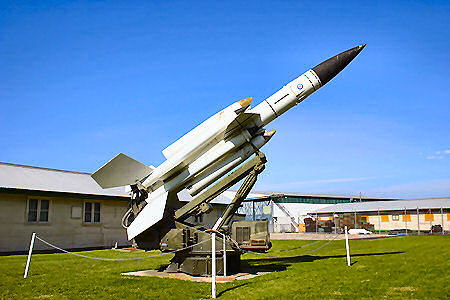 the short period of 1961
to 1968 (the shortest period for any major equipment).
the short period of 1961
to 1968 (the shortest period for any major equipment).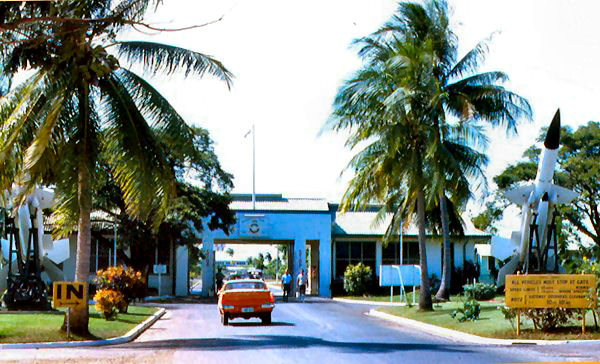
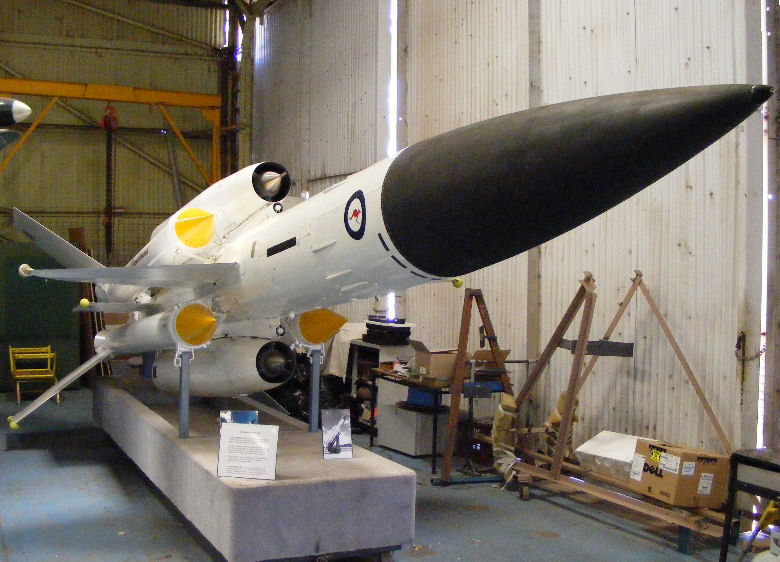
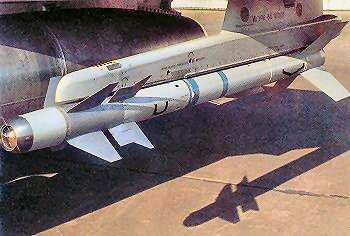 the fixed launch platform for the Bloodhound, it could travel at
Mach 1.8 (more than 1800kmh) and still launch the Matra whereas any
surface-to-air missile has to commence its flight from a standing
start.
the fixed launch platform for the Bloodhound, it could travel at
Mach 1.8 (more than 1800kmh) and still launch the Matra whereas any
surface-to-air missile has to commence its flight from a standing
start.